Many people, flying along the highway from Kona to Hawaii Volcanoes National Park, dash through South Hawaii as quickly as possible to reach the park without realizing they are missing some of the best, and least visited, places in the whole state. This southern end of the island is where the Polynesians first landed and began their colonization of the Hawaiian Islands; it is home to the beaches where most of the endangered green sea turtles breed and lay their eggs in the main Hawaiian chain, and it is home to some of the most amazing history and awesome history anywhere in the world.
Clearly, the visitor to Hawaii can use some help finding the more secluded, wild and exotic destinations and attractions. To help you get more out of your Hawaii vacation, Tour Guide Hawaii has released a brand new iPhone/iPod Touch App which navigates you to all the most popular visitor destinations, the most interesting attractions, the most romantic and secluded beaches; helps you effortlessly find hikes, snorkel spots, historical and cultural landmarks, shopping and dining. And of course, our new App includes directions to, and rating of, all the public restrooms! Learn all about it, here.
In addition to real GPS navigation, this app also allows you to navigate using Google Maps or, if no internet or phone service available, with on-board maps and driving directions! Our App is crammed full of entertaining and informative video presentations about how and where to snorkel, the best trails and beaches, what to pack to bring to Hawaii, cultural orientation and language tips!
Before you rush off to buy our new App on iTunes...let's take a few minutes and explore some of the fabulous and fantastic things to see and do along the Hawaii Belt Road through South Hawaii that you might not miss if you weren't using our fabulous App. Of course, our App has much more detail in its video content than we can present here, but this will serve as an indication of what you might otherwise miss.
Mauna Loa South Flank Land Slides: The flanks of the Hawai'ian volcanoes are unusually unstable because of their extreme youth, rapid growth and because the flows are very thin, discontinuous and are comprised of loosely stacked a'a lava, air-fall material, pahoehoe lava with the loose rubble that forms when the lava flows into the sea. Because of this instability, many extremely large landslides in the past have broken loose, and this is the reason for the steep topography on the lower southern flanks of Mauna Loa. The angle of repose of Hawaiian lava flows (how steeply the land must tilt to get the lava to flow) is roughly 6 degrees, and looking at the gentle slopes of Mauna Kea and Mauna Loa, one sees that they come very close to this angle. Therefore, topography on the island that is steeper than about 6 degrees represents either faulting, erosion due to water movement or to landslides. One such twenty-mile long landslide, from about Mile 109 on Highway 11 to just north of Miloli'i, slid away about 120,000 years ago. One can see the scar from where the landslide broke loose along Kealakekua Bay and the precipitous cliffs that enfold the Captain Cook Monument as well as the steep hills of South Kona and northwest Ka'u. This landslide generated a tsunami wave of sufficient height to completely wash over the 1427-foot tall summit of Kaho'olawe and wash high up on the mountains of Lana'i. Coral rubble deposited by this tsunami can be found to this day on top of Kaho'olawe and at altitudes in excess of 1000 feet on Lana'i.
Honomalino Bay: As the highway creeps along the edge of the land slide escarpments on Mauna Loa, every so often an opportunity to turn downhill and explore what's “over the edge” presents itself...one such spot is just south of the 89 mile marker...the turnoff to Miloli'i fishing village and Honomalino Beach. The village and villagers of Miloli'i itself are a very insular Hawaiian community, wary of outsiders, and best treated with aloha and respect, from a distance. However, one of the true gems of West Hawai’i is Honomalino Beach. Rarely crowded, this lovely beach is is reached by a 20 minute hike from the south end of Miloli’i Beach County Park.
Drive slowly through their ocean-front village past the wreckage of the sea water desalinization plant, past the house inhabited by Elvis Presley in the movie “Girls, Girls, Girls” to the Miloli'i County Park. Park in the lot by the covered pavilion. The hike starts between the bathrooms and a yellow church and is always along the right fork of the trail, in and out of the surf line, to avoid private property. An interesting hike in and of itself, wandering along the beaches, through the dryland forest and over aa lava flows, it wanders about a mile and a quarter to the palm-lined beach. Snorkeling is very interesting on the north side of the beach, along the rocks, when the surf is low. The water, though crystalline and clear, can sometimes be a bit chilly in spots doe to freshwater spring discharge through the sand.
Old Mamalahoa Highway: A scenic stretch of the old Mamalahoa Highway between mileposts 88 and 86 offers a glimpse into what life in Old Hawai'i was like. This rough old road remnant rolls through macadamia orchard and wild countryside and is worth the detour. Driving this stretch of road, remember that to Island residents, the Hawai'i Belt Highway is relatively new; many people living in Hilo will tell you they haven't been to Kona in 20 years or more because the road is just too hard to drive, you know they are remembering the old highway like this, as it used to be, not as it exists today.
Manuka State Park: An easy 1-2 hour stroll, a great place for a picnic or a break from driving The Belt Highway, Manuka State Natural Area Reserve and Manuka State Wayside Park lie between the 82 and 81 mile markers and offers the unique setting of both lush wet, and dry-land, forest. The arboretum around the parking lot was planted of native and trees first introduced during the 1930s to the 1950s. The hike, which circles through the forest to a pit crater, takes 1-2 hours and has well-marked nature points of interest along the way. The trail also winds over both newer and older lava flows, so it's easy to see how the forest develops through stages as the lava ages and weathers. Although an easy walk, some of the footing is loose, so sturdy shoes should be worn; no water is available along the trail, so you should carry a quart per person. This also is a very pleasant place to observe some of Hawai'i's unique forest birds at dawn and sunset. The cool, inviting and fragrant Wayside Park has ample parking, picnic tables, restrooms and water available. There is a small covered pavilion at which "by permit-only" camping is allowed.
Hawai'ian Ocean View Estates (H.O.V.E.): Check your gas gauge, check your canteen, check your lunch box! Hawai'i Ocean View Estates is the last outpost of civilization for miles around. Hawai'ian Ocean View Estates is the world's largest residential subdivision. As such, it lacks only three things: water, electrical power and, most importantly, residents. Built in the 1960s, ownership of the subdivision has passed from hand to hand, but lack of utilities has kept residence numbers low. Despite this, a hardy settlement has sprung up with a great sense of community, even though many residents rely strictly on catchment for water and personal generators for electricity. The climate in Ocean View is perfect year round, but there are no public beaches or cultural amenities, so it hasn't flourished as a town. Ocean View boasts a few stores, restaurants, churches and a post office. Public restrooms are available below the Post Office.
Disaster of 1868/Kahuku Village: Ferocious earthquakes! Floods of glowing lava! Tsunamis swallowing hapless survivors! Between the 71 and 72 mile markers of Highway 11, just west of the South Point Turn-off, is the wild scene of a natural disaster the proportions of a Cecil B. DeMille film. The only remaining reminders of the disaster are the lava flow of 1868 exposed here, and the ruins of Kahuku Village which lie beneath it. Starting on March 27, 1868 and continuing for five relentless days, earthquakes shook the Ka'u region, including the worst earthquake recorded in Hawai'ian history, one of 7.9 magnitude on the Richter scale. Hundreds of landslides were loosed, cinder cones collapsed and small tsunamis continuously licked the Ka'u coastline. On the second of April, after a massive convulsion, a giant river of lava burst through from underneath, inundating everything in its path. A giant tsunami washed over the coastline, swallowing whole villages and canoe fleets, killing 46 people. Massive landslides flowed across the land, burying parts of Punalu'u and Ninole and ultimately killing 31 people.
South Point: This sweeping landscape arches openly and inviting from the tumultuous shore break at Ka Le to the icy heights of Mauna Kea's summit almost 14,000 feet above. The farthest point south in the entire United States, South Point is haunting, windswept, wild, empty, beautiful. Although still only 1-lane wide in many places, the road to Ka Lae from the Hawai'i Belt Road has been greatly improved in recent years. The roads, beaches, boat launching facilities and parking are all free and on public land, contrary to what some signs and unsavory characters might try to tell you. Just don't leave valuables in your car, and be sure to lock it up. The brooding and dilapidated wind turbines of the Kamaoa Wind Farm are along the road to Ka Lae. This wind farm, when all of the turbines are operating, can generate enough electricity to power 100 homes; unfortunately, usually 1/3 to ½ of the turbines are out of service at any given time. The surreal setting on the green plain with the cows grazing unconcernedly, coupled with the eerie, "sci-fi" sound of the generators makes this a unique place to stop, look and listen.
The waters at South Point are wild, crystalline turquoise and wicked. It is obvious from the surf and the currents that swimming is right out along most of this coastline. The only recommended snorkeling is at the Kaulana boat launch and at the green sand beach...and then it is recommended only in calm seas. But it is beautiful; perhaps as beautiful and wild a spot to snorkel as anywhere in Hawai'i.
Hike to Green Sand Beach: Unique and special, Hawai'i's green sand beaches are as beautiful as they are strange. The beach sands are composed of crystals of the semi-precious mineral olivine (also known as peridot). The green sand beach at South Point, the best known, is reached by turning left onto a signed, patchy-paved and dirt road immediately when you arrive in the Ka Lae area. Follow signs to the Kaulana boat launch and park just to the left (south) of it. The dirt road that leads along the shore to the green sand beach is sometimes gated and locked. Hiking distance is 2 ¼ miles each way along rolling tropical prairie (and if you cannot envision that, you really need to do this hike). Despite the multiplicity of dirt roads, you really cannot get lost as you are never out of sight of the shore. When you arrive above the beach on the crater rim, there is a faint track to scramble safely and easily to the beach. One can also easily scramble down from the middle (easternmost) of the cone, but this can be slippery. Although tricky to spot on the way down, from the beach looking up the way back to the crater rim is easy to follow. When visiting here, plan and act as if there were no services, and no rescue available.
Waiohinu/Mark Twain Monkey Pod Tree: Waiohinu is a for-real Old-Hawaii town, as are it's neighbors Na'alehu and Pahala. Waiohinu boasts a gas station and store, public restrooms, a small hotel and numerous bed and breakfasts as well as Margo's Corner, a privately-operated campground. It is always wise to fill your gas tank at the first opportunity when traveling on the Southern Coast because there are no service stations operating at regular, predictable hours, or at all after dark, in most of these tiny towns. Waiohinu has another more historic distinction. It is here that Sam Clemens (Mark Twain) planted a Monkey Pod so he'd have a shady spot to sit and write. Although the original tree blew down in a hurricane in 1957, a new tree has sprung-up from the surviving roots and can be seen in the center of town by the State Historical Society Marker commemorating Mark Twain's visit.
Na'alehu: Lovely, scenic, sleepy Na'alehu, the southernmost town in America is the not-so-bustling mercantile hub the southern end of Hawai'i Island. Here is the Na'alehu Fruit Stand, the source of wonderful fresh fruit and the best pizza on the Island; the Punalu'u Bakeshop, known Island-wide for its malasadas and Portuguese Sweet Bread. The Union 76 gas station is your best bet for after-dark gas in South Hawai'i, but don't bet the farm on it being open on any given night. Especially during fishing season. The Na'alehu Police station, on the east end of town, is the only outpost of law and order constabulary between Captain Cook and Volcano.
Whittington Beach Park/Honuapo Bay: The wild, ragged southern coastline of Ka'u, reminiscent of Big Sur, reaches its apogee here at Honuapo Bay. Although the County Beach Park is in poor repair and frequented by a less-than-desirable element, the raw sense of connection to the ravenous ocean, the eerie mood of the collapsed Pahala Sugar Co. wharf and the joy of ever-renewing life in the many tidepools and ponds that dot this shoreline make this Park a must-see stop. There are two, perhaps not conflicting, but interesting interpretations to the name Honuapo in Hawai'ian. If the reading is "honu apo", it means "caught turtle", a reference to the many dozens of Hawai'ian Green Sea Turtles who make this bay their home. However, if you read the words as "honua po" it means "land of the gods"; clearly in such a wildly beautiful, stark and powerful landscape, this is an apt name, as well. The true meaning is lost to the mists of time and depredation on native culture made by the missionaries, but knowing how modern speakers of Polynesian delight in the multiplicity of puns and double entendres their tongue is mother to, it is not far fetched to imagine the ancient Hawai'ians giving the bay this name with both meanings intended.
Punalu'u Black Sand Beach Park: Punalu'u's black sand beach, a truly remarkable place of great peace, beauty and spiritual healing is home to dozens of endangered Hawai'ian Green Sea Turtles. The wildness of the ocean and the serenity of the freshwater fishpond and coconut palm-shaded beaches make this an ideal place to spend some soul-recharge time. Snorkeling, picnicking and camping, or just relaxing on the beach, are major destination pass-times here. Due to chilly waters, off-shore winds, strong currents and a fearsome rip, swimmers and snorkelers should use caution when swimming at Punalu'u, but it's hard to resist getting in and swimming with all those turtles. Camping is permitted around the pavilions by permit only and can be a windy, but wild and elemental, exercise in campcraft. Due to the exposed nature of the terrain, however, there is little privacy.
Pahala: Friendly, clean, quiet, scenic; Pahala seems a perfect community. Twenty years ago Pahala was a bustling center of activity for the Pahala Sugar Company, but with the demise of the sugar industry, Pahala residents have either moved on to other towns seeking new employment, or hunkered down the await what future may come. There are a few good art galleries and the old Plantation House Inn, which offer the traveler a look into post-plantation life in South Hawai'i. Pahala is also the only outpost for groceries, gasoline, banking, post-office and restaurant activities between Na'alehu and Volcano; one should be careful, however, as business hours tend to be irregular and never extend much past dark. The causal traveler should also be wary of a couple of bad speed traps on either side of Pahala. A re-birth, of a sort, is underway in Pahala and other small towns in Hawai'i; because of the extremely undervalued real estate, compared with the extremely over-valued real estate elsewhere in Hawai'i, mainlanders and retirees are buying up land as residents finally sell. This has caused a small renaissance in service-sector employment, but it will take a generation or two for these tiny towns to rebuild and return to their former bustling selves.
Wood Valley: A few miles upslope of Pahala into the macnut groves is the tiny community of Wood Valley. There are no services available here, except for a couple of bed and breakfast establishments and the Nechung Dorje Drayang Ling Buddhist Temple, which serves as a place of teaching and retreat. If time permits, it' is a very worthwhile way to spend a lunch hour by procuring a take-away meal in Pahala, then driving the short way up into Wood Valley to enjoy lunch in the utter tranquility that steeps this community.
Hawai'i Volcanoes National Park: Hawai'i Volcanoes National Park is a magical, spiritual, wondrous, strange and beautiful place comprised of great contrasts and contradictions: dry as dust desert to teeming tropical jungle; frigid sub-arctic wasteland to steaming black sand beaches to rivers of flowing lava. The star attractions in the Park are a pair of active volcanoes; Mauna Loa is the largest mountain on earth and Kilauea is most active volcano on earth. However, there are numerous other wonders from lava tubes to crawl down, black sand beaches with sea turtles to watch, mysterious petroglyph fields to explore, tropical jungles to hike through, endangered bird species to find, happy-face spiders to amuse and an otherworldly volcanic landscape so fresh it's still steaming. Famed for its fabulous views of Mauna Loa and Kilauea as much as for its interesting exhibits,
The Jagger Museum (named for geologist Thomas A. Jagger) is open daily from 8:30a.m. to 5:00p.m. Exhibits include murals by Herb Kawainui Kane, seismograph charts of eruptions and earthquakes, geological displays and display about the natural and human history of the Park.
Perhaps the finest short day hike in the park, a four-mile, 2-3 hour trip down into, across and back out of Kilauea Iki Crater gives one an intimate feel for volcanoes, Hawaiian-Style. Along one side, thick fern and ohi'a forest skirts along the rim and on the other, lush tropical rainforest crowds to the very brink of the crater; bleak volcanic desert lines the crater walls and covers the floor. The start and finish of the hike are along well marked, wide trails. The remainder is an easily followed, well marked trail with stone ahu (cairns) over the crater floor. As always when hiking in the Park, it is wise to avoid the noonday sun, and to remember that afternoon showers are common, especially near where this hike meets the crater rim.
Hawaii Volcanoes National Park is open 24 hours a day, 365 days a year. During daylight hours, an access fee is charged. The Visitor Center has a 24-hour information line at 808.985.7017 and there is a 24-hour eruption hot-line at 808.985.6000. Within the Park tune to A.M. radio 530 for continuous information broadcast. Whether returning to Kona or to Hilo after visiting the Park, remember that after dark except for perhaps in Kea'au, there is little or no food and no gas available on the south end of Hawaii Island after dark.
Volcano Village: One should plan ahead and expect to fill the gas tank and tummy in Volcano Village, across the highway from Hawaii volcanoes National Park. Gas prices are not, contrary to what you may have heard, any more confiscatory in expense than anywhere else on the island and Volcano is home to some first class restaurants, bakeries, interesting shops and even the island's only winery. Plan on staying a while and enjoying the aloha in this mountain town while you recharge yourself from your busy day in South Hawaii.
Remember to check out our new for touring all of Hawaii...using the Tour Guide Hawaii iPhone/iPod Touch App will save you time, save you money and allow you to see and do more with your Hawaii vacation; this quick video tells you how.
For more information on traveling to Hawaii in general and visiting the Big Island in particular, visit www.tourguidehawaii.com and www.lovingthebigisland.wordpress.com. For information about the author, please go here.
All Media copyright 2009 by Donald B. MacGowan
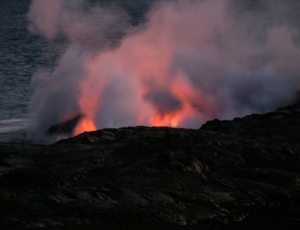
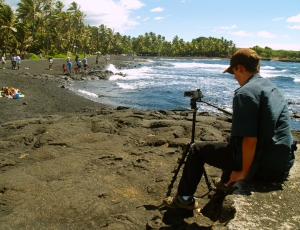
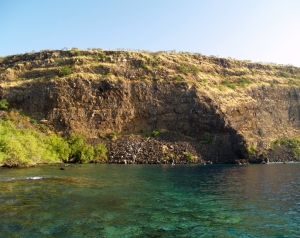
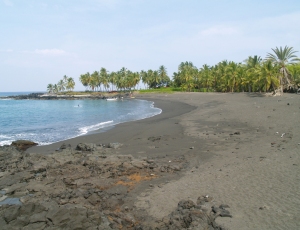
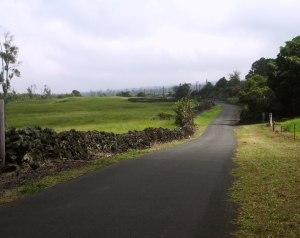
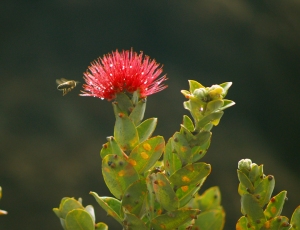
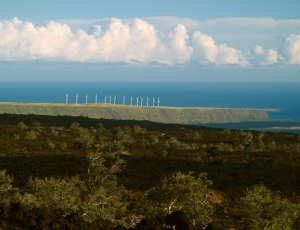
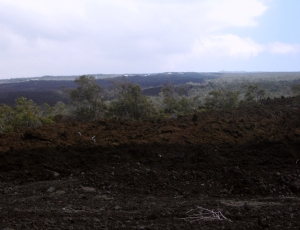
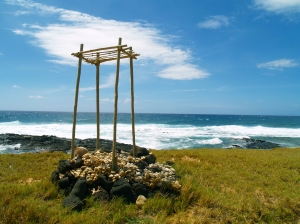

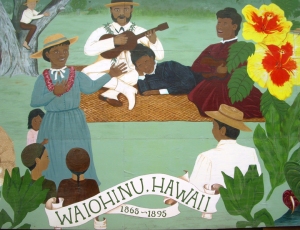

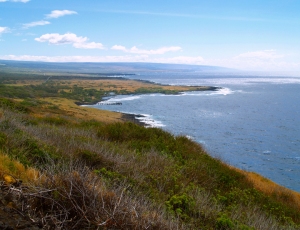
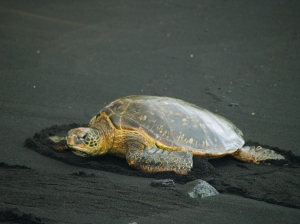
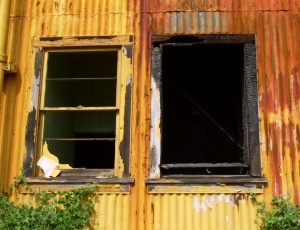
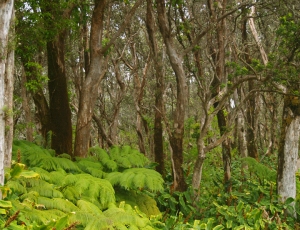
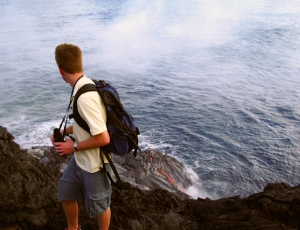
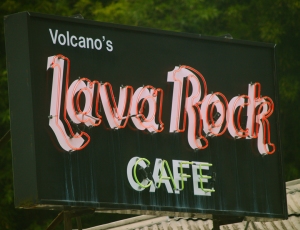
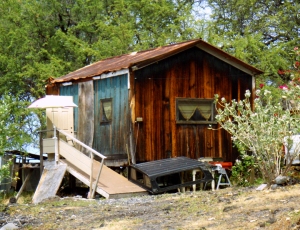
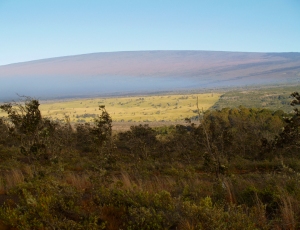

No comments:
Post a Comment